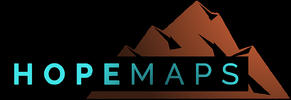Hmm... I think my approach is different. Maybe because I often work with watercolor, or because I always try to get inspiration from historic map makers and traditional techniques, instead of thinking about texture I think about transparency. My color layers are always low opacity, so don't hide the background textured layer : except rare case, it's the background which gives the texture to the whole map.
I made this for you : it's a simplified view of my current work on
DarkSouls. The color itself is really quickly made to give a first idea of the color step to my client, so it's not perfect, but should illustrate our case here
 ColorProcess_by_MistyBeee.jpg
ColorProcess_by_MistyBeee.jpg
Let's see, to read from bottom to top, as usual :
- Clean linework : as you can imagine, here are the dark lines from the linework ; 100% opacity, etc.
- Sketch : nothing useful here : just the blue lines from the first sketch
- Color folder :
- Texture + light & shadow : As told before, it's a quickly made sampler so I was lazy here and put all on a single layer. With using the same chalk brush 50% opacity + pen pressure opacity, I suggested bricks, added some texture and, added light (coming from top right) just by picking the parchment color. The layer is 100% opacity, no effect, no color mode... just a few light brush strokes

- Color base : This is just a fill layer>solid color + a mask ; any plain color 100% opacity do the job here. As you can see, this color layer is 100% opacity, but the 3th picture shows the mask which is painted with low opacity (here with a chalk brush 50% opacity + pen pressure opacity). A second pass with the same brush suggests the shadows (or shades ? I never know -_-). As it's low opacity, you can still see the paper texture below by transparency.
- Opaque white square : This is just to help you see better the transparency of layers above

- Background : here is the parchment that is the support of the whole map : the "paper feel". I must confess it's not super textured, so not ideal for the demonstration ^^'
Now... even with low opacity, it's real that the paper texture is still slightly lower where color is. If I need more texture, 3 solutions :
- Just paint more texture on the "Texture + light & shadow" layer : it's what I usually do, using the same texture brush that I use for painting my background parchments.
- If the map is totally painted/covered with color, just playing with contrast or levels, make the background itself more textured.
- You can also duplicate the background parchment and put it on the top of your layers (or just after the linework). Make it grayscale only, play with the levels and contrasts to strengthen the texture, put the layer on Overlay mode and then ajust the light of this layer to make it as close as possible to a 50% grey, which is the exact tone that don't 'burn' the picture with overlay mode. I let it at 100% here to show you, but a lower opacity would be better :
PaperTexture_by_MistyBeee.jpg



















 Reply With Quote
Reply With Quote
 (That map is actually the reason why I asked the layer and its modes question. Certain colors just doesn't want to come out the right way without me sacrificing the texture. All well, I will tackle it again sometime.)
(That map is actually the reason why I asked the layer and its modes question. Certain colors just doesn't want to come out the right way without me sacrificing the texture. All well, I will tackle it again sometime.)



